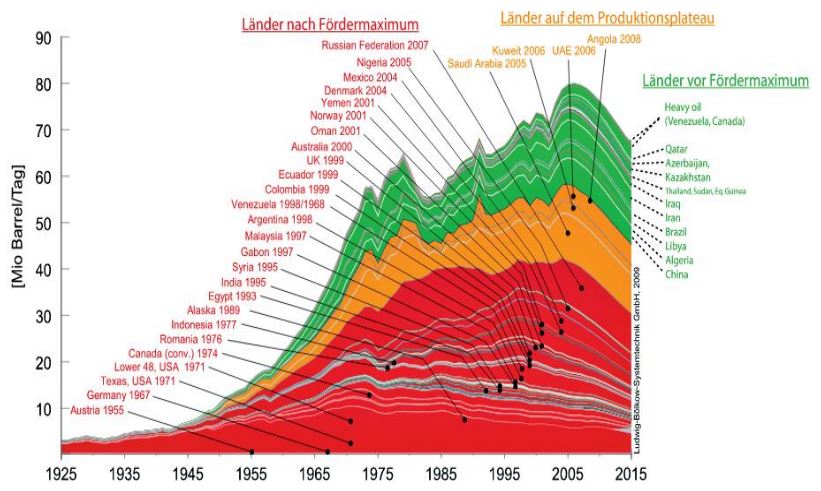Hydrogen and synthetic fuels more than theoretical alternatives?
By Manfred Peter
This work is an attempt to summarise the main contents of a large number of sources on this subject. The sources used are referred to in brackets. The sources are listed in the appendix in the order of their use. The Graphs come from German sources and unfortunately could not be translated.
Introduction
Gradually, there is a growing realisation that in the next 20 to 30 years decisive things will have to happen to slow down global warming. It is also becoming clear that if no action is taken during this period, certain tipping points will be exceeded and developments will become irreversible. To put it crudely: if decisive steps to curb global warming do not take place by 2050, things will become uncomfortable on Earth towards the end of this century. More and more people are also becoming aware that this is not a theoretical, distant date, but that the children who are now in kindergarten will still be alive then. (0)
It is undisputed that global warming can only be slowed down if greenhouse gas emissions are massively curbed. This includes, indispensably, phasing out the burning of fossil fuels. This environmental policy approach to phasing out coal, oil and natural gas is also supported by the fact that stocks of these energy sources are dwindling, their extraction becoming more expensive and therefore uneconomic, and one day even more so due to increasing scarcity. This development cannot be prevented even by new discoveries. So there are also economic aspects in favour of developing alternatives.
As the following graph shows, the maximum of world production of “cheap” oil was exceeded around 2005.

It is therefore essential to develop and make use of alternative forms of energy. This applies in particular to solar energy. With the exception of tidal energy and geothermal energy, renewable energy sources are more or less direct effects or consequences of solar energy. The solar energy radiating onto the earth is 15,000 times the current energy consumption. It is therefore a question of developing techniques to compensate for the disadvantages of solar renewable forms of energy. Namely that they are discontinuous and have a lower efficiency than the chemical energy conversion of fossil fuels.
In this case of renewable forms of energy, the focus is on hydropower, wind energy and direct solar energy. All this energy sources are used to generate electricity. With the exception of hydroelectric power, however, these forms of energy are not available on a continous basis, which means that electricity generation can only be adapted to electricity demand to a very limited extent. This raises the problem of power storage. Electricity can be stored directly in batteries, accumulators and capacitors. The storage quantities are relatively limited. Indirectly electricity can also be stored in pumped storage power plants or in various pressure chamber systems. Although larger quantities are possible here, these are technically complex, capital-intensive and sometimes very space-intensive processes. (1)
It is unmistakable that the development in the energy sector is moving towards more alternative energies, even if there is justified criticism that this development should be faster. The following graphs are show this. They also show that this development is a global one, albeit with different speeds across the continents and regions. (2)

With this development towards significantly more electricity from wind and solar energy, hydrogen is becoming increasingly important as an energy storage and energy carrier.
Download the complete article in English or in German
Also for the footnotes
